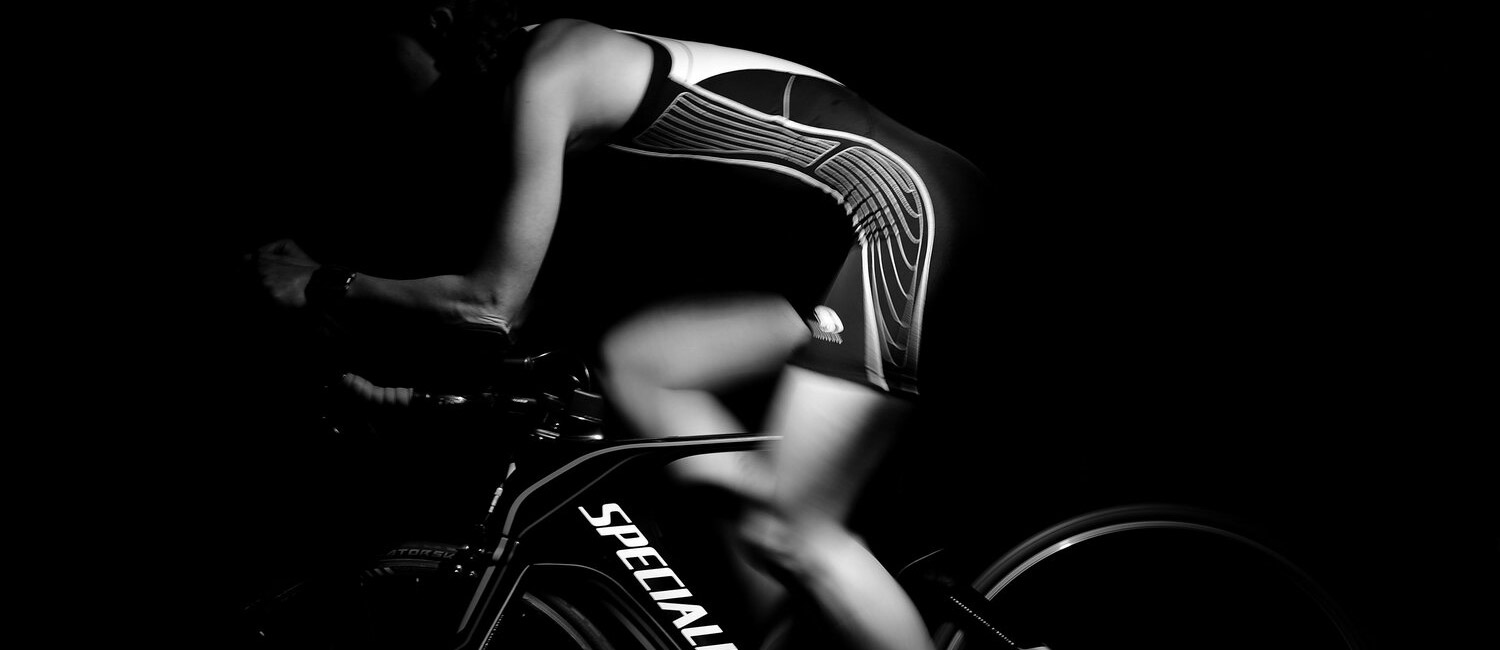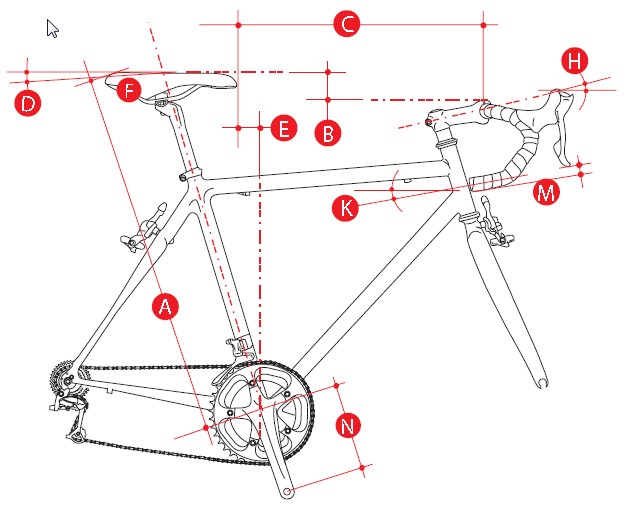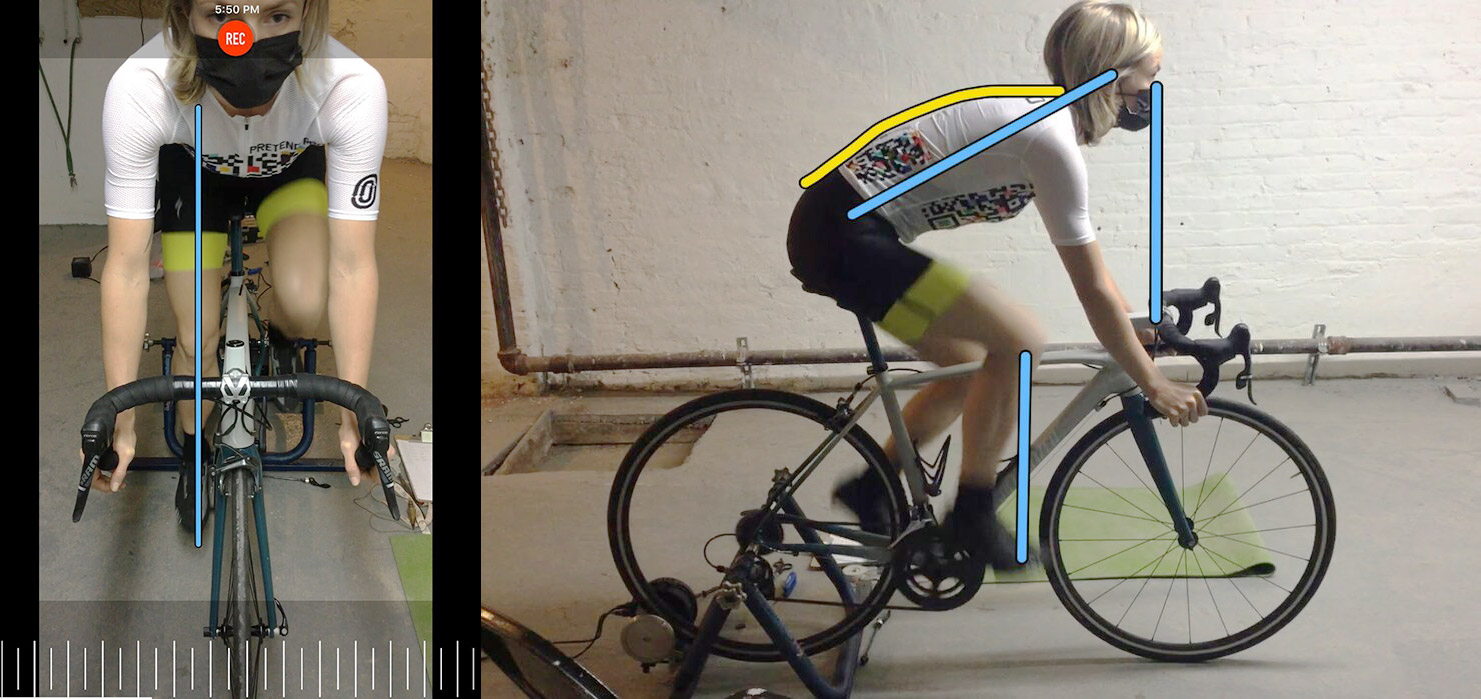

Welcome guest blogger, official outfitter, local coach and bike fitter Mikael Hanson (he/him). Mike founded Enhance Sports* in 2004 as an endurance sports coaching and consulting company and is a USA Cycling and USA Triathlon certified coach. Mike is also the coach for NYU, Columbia, and the CRCA junior cycling teams. He was formerly the endurance sports program director at Asphalt Green. Below are his thoughts, adapted from his own blog, on why cyclists should get a professional bike fit.
He can do fits safely from a spacious apartment during the pandemic or at your place if you have a trainer for your bike, with all parties wearing masks. If you’re interested in booking a fit with him, reach out to enhancesports@aol.com and let him know you found him through BRAKING AIDS® Ride. Here are his thoughts.

Personally, I think the single greatest investment a cyclist or triathlete can make in his or her own performance is a professional bicycle fit. I am not saying this as a coach or even a bike fitter, but as one who has seen far too many athletes spend small fortunes on bicycles that in the end were not properly fitted to them. A bicycle fit is essentially the proper marriage between rider and bicycle. It the past, determining the proper frame size one should ride was done using a generic formula (.647 x your inseam in centimeters), which would give you an approximation of your frame size (ie. an 85cm inseam would point to a 55cm frame size). But that method does not work as well as it has in the past.
Given that frames are rarely built ‘square’ any longer (where the top tube measurement is the same as seat tube measurement), this formula is only a starting point. Frame types run the gambit now, as we see more responsive and lighter compact style frames (a shorter seat tube with downward sloping top tube), frames designed with higher head tubes for the recreational rider who may not have the flexibility they once enjoyed in their youth, and then there are time trial and triathlon frames, most with very short head tubes aimed at decreasing that frontal area exposed to the wind.
Another aspect of sizing is the rider. A look at two riders of the same height and build, chances are their fit will be different due to many other factors such as intended use (racing, recreational riding, triathlons, etc), injury history, and flexibility to name a few. This is where working with a professional bike fitter has it many advantages. As in most cases, in the world of bike fitting you get what you pay for. I had one client who came to me with a new bike complaining of knee problems. He began pedaling for me and immediately I saw that his seat height was a good 2 inches too low. I asked him about it and he said the bike shop that did his fit also said the seat was too low but that the seat post was out as far as it would go. It never crossed their minds to change to a longer seat post, which is what I did and solved the rider’s knee problems immediately.
A few years back, VeloNews ran an article entitled - "Five ways to reduce your risk of over-use injury on the bike". That list included the following:
- Professional bike fit
- Strengthen the hips
- Lengthen the hamstrings
- Close the open chain
- Ride, rest, recover
With regards to the first suggestion VeloNews went on to say, in a sport based on such a highly repetitive action—pedaling—the first line of defense against injury is a proper bike fit.
“That is the biggest thing,” said Frank Overton, founder and head coach of FasCat Coaching in Boulder, Colorado. “A good bike fit ensures you’re in the proper position that’s biomechanically not going to cause you any overuse injuries.” Overton pointed to knee, Achilles tendon, back and neck pains as just some of the common discomforts associated with improper bike fit.
Many riders are most prone to overuse injuries during the transition from winter to spring, as the weather improves and six-hour training weeks spent largely indoors swell to 12 hours or more outside on the road. Taylor Phinney (Cannondale Drapac) experienced this firsthand in 2011, seeing minor knee inflammation grow into a case of tendinitis that had him out of top racing form for much of his neo-pro season.
How the bike fitting process should work, beginning with just who should get a bicycle fit?
- A ‘newbie’ who has just upgraded his bike
- Someone rehabbing from an injury and their old position might not be ideal any longer
- Someone who has added new equipment to their bike (like new seat or aerobars)
- A rider experiencing chronic discomfort (saddle sores, numb feet or hands, joint pain, sore back, etc)
- A rider unable to stay in the aerobars for prolonged period of time
I will add one more person who may want to consider a fit. The seasoned athlete who has never had one! You would be surprised by the number of people who think they are riding a properly fitted bicycle but aren’t. Sometimes the changes are small, but even those can lead to big changes in incremental performance, efficiency and overall ride comfort.

Most bicycle fits take around 2 hours to complete (but can run as long as 3 or 4 hours) and all bicycle fits should begin with an extensive interview process and physical evaluation of the rider. Examples of the some information gathered before your fit even begins:
- Information about what your body is doing off the bike (work, hobbies, family, etc)
- Discovering what body ‘blue print’ you bring to cycling
- Accommodating any injuries or asymmetries that you may have
- Identifying your cycling goals both short term and long term
- Being aware of any prescribed corrective devices or orthotics that you use
- Comprehending your riding style and habits
- Measuring your body’s range of motion as it relates to cycling
Next step should be a flexibility and core strength analysis (which will largely determine just how aggressive one can position themselves on the bike and still be efficient. After that, a close look at the shoe/cleat alignment. All of these initial steps take place before the rider even gets on the bicycle! Once on the bike, we begin with motion capture to analyze the fit at the outset of the process and from there make our initial assessment, showing the client the video and where we see problem areas. From there our fitting process integrates the SPIN SCAN function on the compu-trainer system, which allows the fitter to monitor the efficiency of the rider’s pedaling during the fit process with a goal of finding the proper combination of comfort, efficiency and power. In the end, we strive to find that proper marriage between rider and bicycle which offers both comfort and efficiency to ensure a pain free riding experience! Do yourself a favor and invest in a professional bicycle fit.
—Mikael Hanson (he/him)
*Enhance Sports is an official outfitter and offers our riders deep discounts


